A virtual tour of CES 2024
Introduction
In my last article for the ASHB Journal I provided an overview of CES 2024. In this article we’ll take a virtual tour of CES 2024 with photos of exhibits spanning the scope and diversity of innovations I found noteworthy at CES, followed by product descriptions.
With most of these product descriptions I included a web address (URL) of the manufacturer and a video URL about the product on YouTube. Each URL was checked before publication, but may change or be removed by the creator or by YouTube.
This is my curated view of CES, which started 57 years ago with radios and TVs, and now features consumer electronics embedded in an amazing array of products.
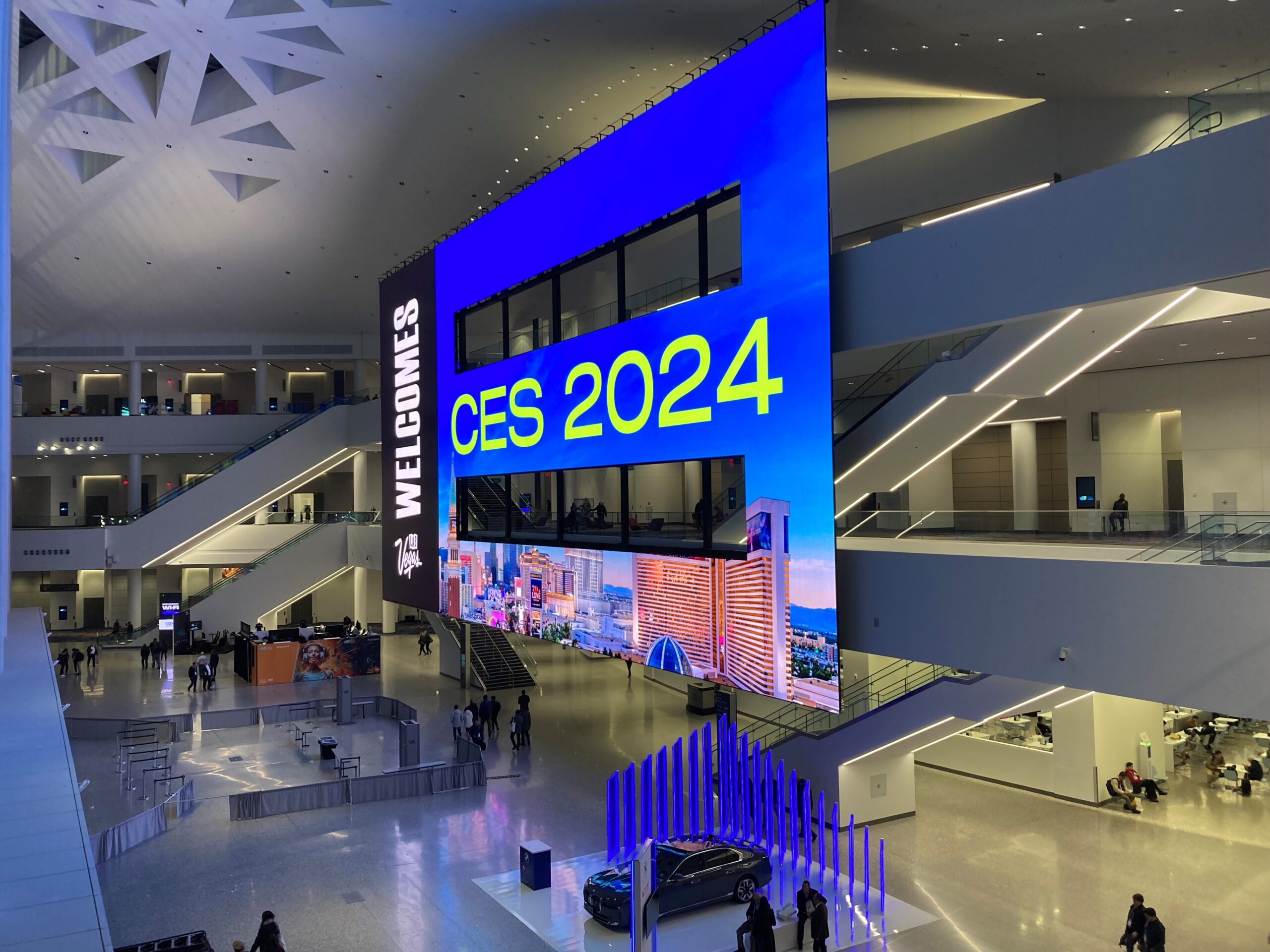
Welcome to the Las Vegas Convention Center West Hall
Bone-conduction headphones (www.mojawa.com)
Mojawa claims these headphones, which vibrate the bones near the ears, are “ideal for athletes, swimmers, office workers, or people with sensitive ears.” They offer “quality bass” with “haptic experience” and “nuanced vibrations.” Various models cost from $130 to $300. The high-end model offers 32 GB of MP3 storage, eight hours of playing time, and real-time monitoring with alerts for:
- Heart rate
- Accelerometer
- Pressure
- Optical wear detection
The headphones turn on automatically when worn and turn off after three minutes when removed from the head. A light sensor called an “optical wear detector” controls this function by determining if the headphone is being worn. The sensor is on the side of the headphones facing the head, which blocks ambient light when the headphones are worn.
The headphones link to a smart phone app for:
- Real-time monitoring of pace, steps, laps, calories, distance, etc.
- Adjustable equalization via an app.
- AI training programs for post workout analysis.
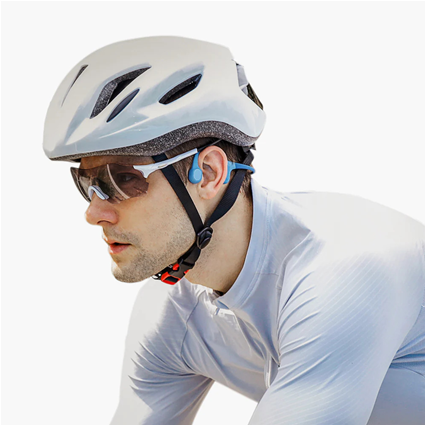
Bone-conduction Headphones for Athletes
www.youtube.com/watch?v=v6Xwwbsfq7w
Personalized Sound Zone (us.nwm.global/product/MBE001)
NWM (pronounced “Noom”) is part of NTT, the largest Japanese telecommunications company. NWM headphones were introduced in 2021 as an alternative to bone conduction headphones. The speakers rest on the upper part of the ear hovering just above the ear canal. These headphones cost $60-180.
NWM claims the following benefits:
- The design limits sound leakage “that only you can hear” by creating a Personalized Sound Zone (PSZ). The open-ear speakers let in ambient sounds while keeping what’s playing private “for your ears only.”
- “Create a world where you control the sounds you hear.”
- “Next Generation of Open-Ear Wireless Earphones Only the Wearer Can Hear.”
NWM is promising “Upcoming software updates with event detection, sound filtering, and more.”
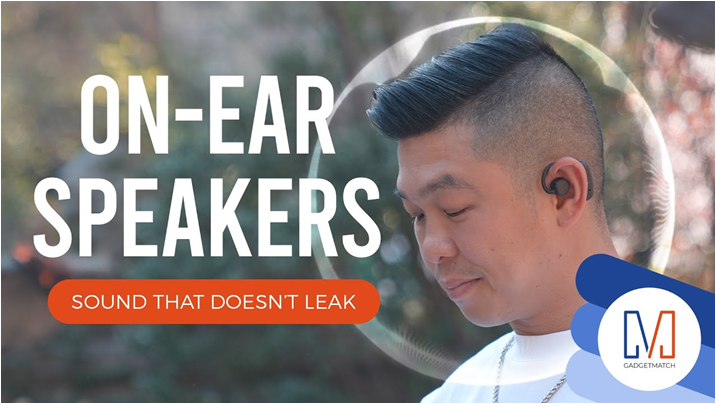
Headphones Near the Ear Canal
www.youtube.com/watch?v=FGIJ3FGvzm8
Noise cancellation (www.avatronics.com)
AVAtronics, based in Switzerland and Denmark, develops Automatic Noise Cancellation (ANC) circuits for sale to product designers of earbuds and headphones. These circuits could also be built into transportation seats for noise cancellation.
AVAtronics claims the technology:
- Offers a wideband solution (minimum 3 KHz is guaranteed) for noise reduction in earbuds that connect to the source material wirelessly. Wireless connectivity for earbuds is called True Wireless Stereo (TWS) technology, which uses a Bluetooth link to a smart phone.
- Is an AI-based technique implemented in the form of a “very light deep neural network.”
- Adapts the ANC to the environment and achieves the optimum ANC performance.
- Provides at least 30 dB noise reduction at all frequencies above 100 Hz; 50 dB reduction “in the most sensitive frequency range of human ears.”
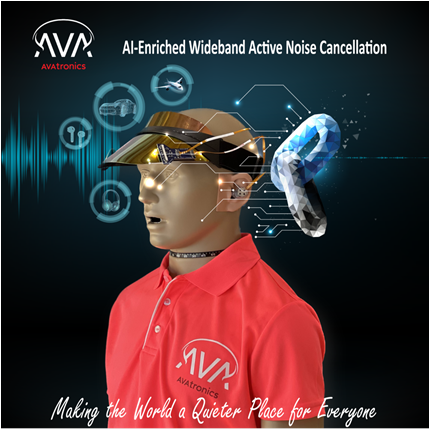
Wideband Automatic Noise Cancellation
www.youtube.com/watch?v=7oD7sMMdM4w
Isolate instrumentals & vocals (www.gaudiolab.com/technology/source-separation)
This is a software product that can isolate vocalists and specific instruments in an ensemble performance. Applications include Karaoke, noise cancellation, and “AI-extracted high-quality accompaniments for your favorite songs.”
This product implements source separation technology. “We outperform Sony, Meta, and Deezer on signal-to-distortion ratio (SDR), a popular metric used in academia for measuring separation quality.” The company claims that “low computational complexity” AI source separation is used for real-time noise canceling.
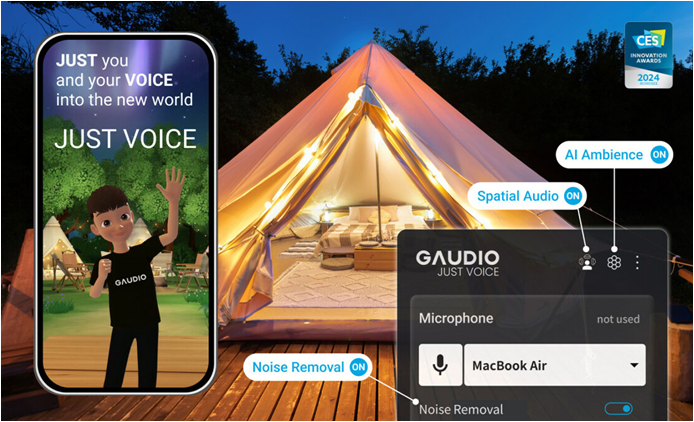
Audio Source Separation
www.youtube.com/watch?v=Edc2mK7gr8w
Create podcasts (www.nomono.co)
This product, called a Sound Capsule, is made by Nomono of Trondheim, Norway. It allows podcasts to be created from interviews in acoustically poor environments such as outdoors in a city center. The device records the interview and uses Nomono cloud services to process the audio stream.
The Sound Capsule technology that is contained in a field device and in the cloud:
- “Enhances voices and removes noise in a click with AI-powered audio processing built for podcasting.”
- “…is spatial audio-ready. Our processing adjusts the ambience and spatially distributes voices to provide immersive experiences with exceptional audibility.”
- Uses object-based audio: “recordings where individual sources (like voices, instruments, or sound effects) are stored as its own audio file (usually mono) and accompanying metadata that defines levels, panning, and much much more.” Objects are then mixed and rendered for the playback environment.
- Produces metadata embedded in the podcast to help render the performance on the listener’s equipment.
The Sound Capsule and cloud processing cost about $2500 for 120 minutes per month. Twice as many minutes cost an additional $29 per month.
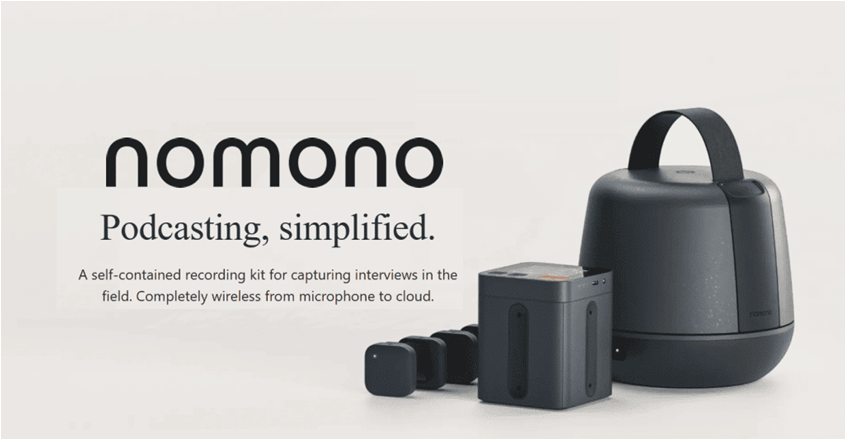
Sound Capsule for Field Recordings
www.youtube.com/watch?v=iix28Z_ERmQ
Wireless EV charging (www.witricity.com)
WiTricity was founded in 2006 by MIT Professor Marin Soljačić for charging electric vehicles (EVs) wirelessly by parking over a charging pad. This product is billed as “The cure for charge anxiety.” It can charge EVs and low speed vehicles such as golf carts. Golf carts are part of a new category of vehicles designed to operate at less than 25 mph called Neighborhood Electric Vehicles (NEVs).
WiTricity has been in business for 15 years and holds 1300 patents with 500 pending. Cars need to include a WiTricity Halo™ receiver to receive power wirelessly. The charging system costs about $2500 initially and is projected to fall. It is being sold to fleet managers.
The wireless technology:
- Includes the capability to draw power from the battery for use in the home, building, or power grid.
- Uses magnetic resonance (MR) to couple energy through oscillating near magnetic fields. MR transmits milliWatts (mW) to kiloWatts (kW) with scalable power transfer.
- Allows multiple devices to be powered by single source.
- Transfers power over greater distances than Qi induction used for smart phone charging.
EV licensee partners provide 3-kW, 6-kW, and 11-kW systems. Systems can be scaled up to 450 kW. The transfer efficiency is 90-93% from the power grid to an EV battery. The MR power can be transmitted through wood, stone, granite, gypsum wallboard, plastics, textiles, glass, brick, and concrete.
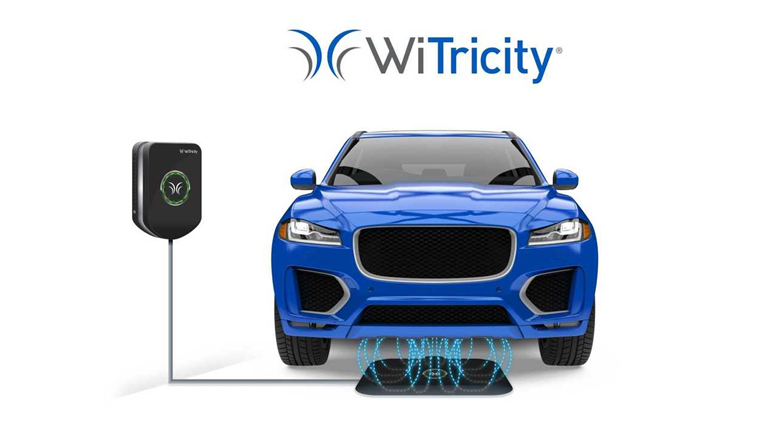
Wireless Electric Vehicle Charging
www.youtube.com/watch?v=oq1j0EjFvLc
Wireless power (www.ossia.com)
Ossia was founded in 2013 by a physicist in Redmond, Washington who developed the technology in 2008. The system delivers 1 Watt to multiple nearby devices containing receiver modules. The operating efficiency is about 30% of a wired connection.
Ossia licensed technology for a Cota™ Power Receiver and offers a Cota Power Hub as a single source of power for devices in a room. These devices can be up to 30 feet from the power hub.
The power is sent in a focused beam to each device within a room. Each Cota Power Receiver sends a beacon signal to find a Cota Power Transmitter. The transmitter then sends power back on the same path. This “conversation” between device and transmitter happens 100 times per second in order to send power safely to devices at a distance even while the receiver is being moved. All Cota-enabled devices receive power simultaneously. The power signals bounce off walls while avoiding humans using a patented smart antenna technology.
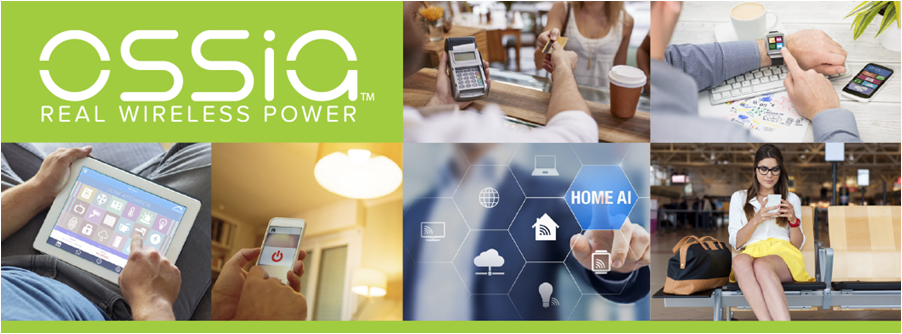
Wireless Device Charging in a Room
www.youtube.com/watch?v=k8bsg9TpRYk
Indoor solar power (www.exeger.com)
Exeger is a Swedish company that makes Powerfoyle™ flexible solar cell material. This material is flexible for molding to device surfaces so the device can be charged from ambient light indoors or outside. Such devices may include remote control units, sensors, headphones, speakers, e-readers, and computer peripherals (such as a wireless mouse and keyboard). Powerfoyle could be applied to clothing.
The charging power depends on the surface area and light level. Typically the Powerfoyle delivers less than a Watt to charge a battery. Exeger claims, “We have reinvented the Dye Sensitized Solar Cell (DSC) with a new architecture that improves real life performance, provides greater flexibility and offers seamless integration possibilities – for all types of products.”
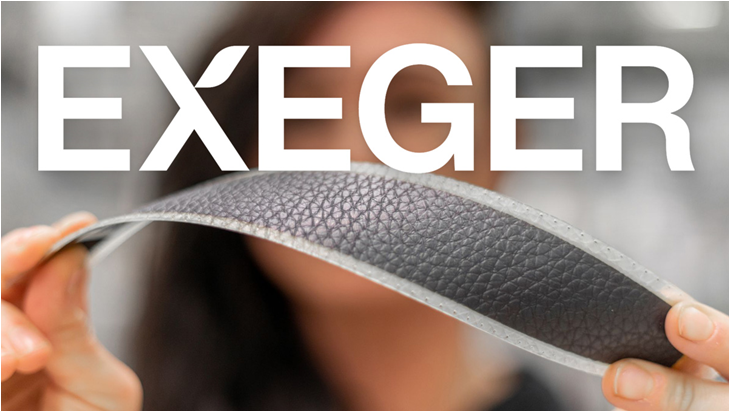
Flexible Solar Cell Material
www.youtube.com/watch?v=E5N5azGNasY
EV charging robot (www.autev.com)
Autev solves the problem of retrofitting a parking lot or garage with EV charging stations. Instead of parking at a free charging station, the charger is brought to the car by a robot carrying a battery. The robot sells for $500 with no additional up-front, installation, or monthly cost.
The technology consists of DC fast charging and can scale with multiple robots.
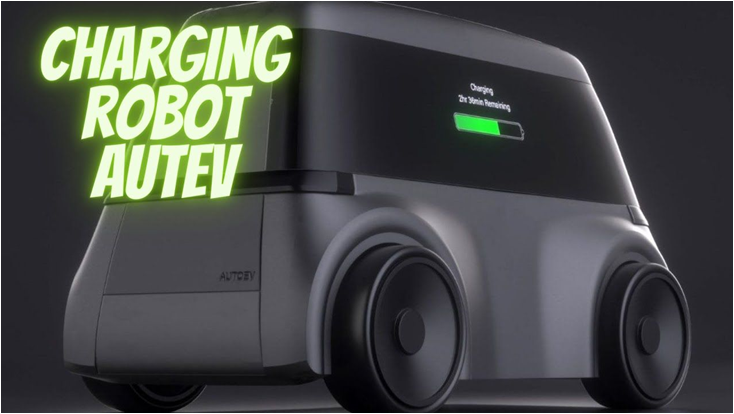
Mobile Electric Vehicle Charging Station
www.youtube.com/watch?v=mzUpWVkdoas
Robotic barista (www.richtechrobotics.com)
ADAM, the robotic barista, was a showstopper at CES. ADAM was developed by Richtech Robotics and billed as “The First Commercially Deployed Humanoid AI Robot in the US!” It offers a menu, takes an order and payment, prepares the product, and delivers the product (such as a cup of coffee). Richtech also builds robots that provide table service (food delivery) in a restaurant, hotel room services, and industrial cleaning services.
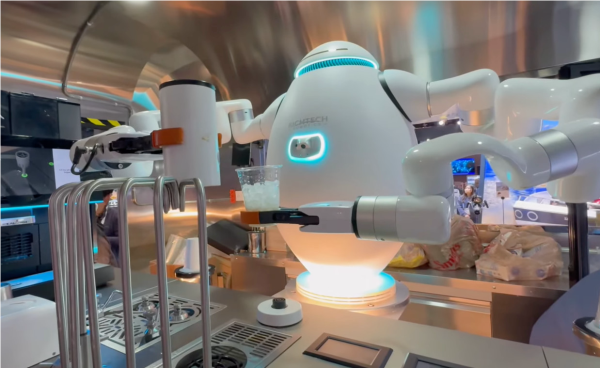
A Robotic Coffee Shop
www.youtube.com/watch?v=1aSrP9dUc5E
Robot companion (www.ddlbots.com)
Digital Dream Labs created a small robot companion called Vector. Vector can recognize people and objects using a variety of sensors. It costs $400; some robotic functions such as voice recognition require a $10 monthly subscription.
Vector includes sensors to see using a high-definition camera, to hear via four microphones, to feel with a touch sensor and accelerometer, to speak using text-to-speech translation, and to charge when needed. It contains a high-resolution display and avoids obstacles when moving. Vector “thinks” via local and cloud processing.
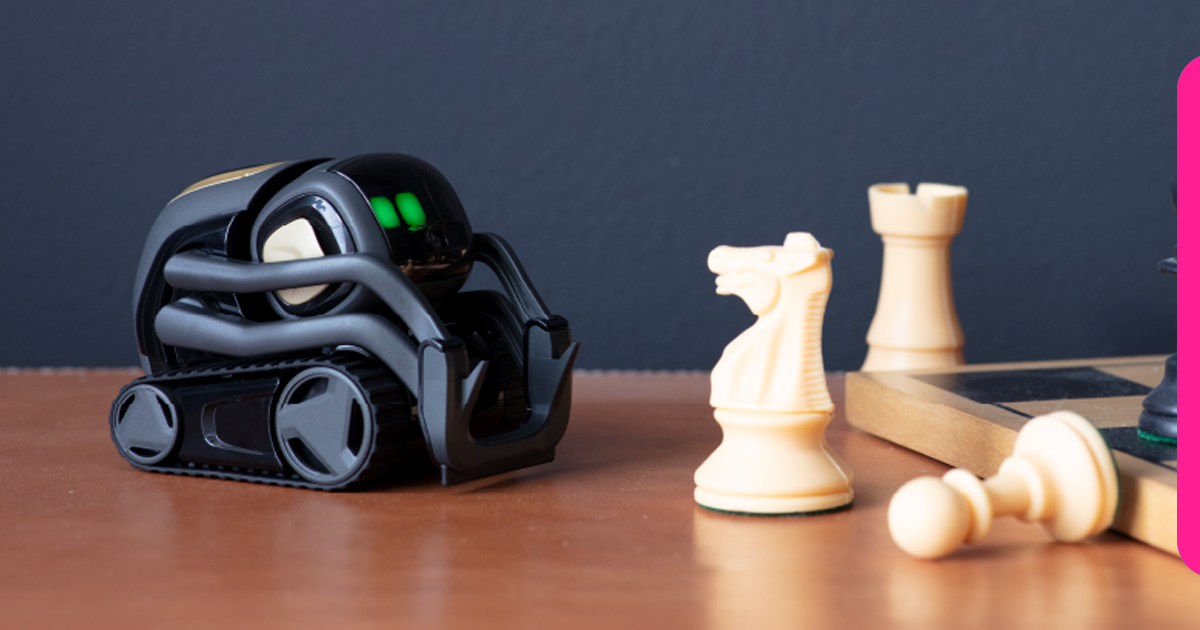
Vector: Your Robot Friend
www.youtube.com/watch?v=lZo2Ny61M1U
The AI parent (www.zoundream.com)
Zoundream, a Swiss and Spanish company, uses AI for analyzing baby cries to advise parents what the infant wants. “Our pioneering deep learning sound based solution is more accurate than any other competing technology.” The company claims this results in:
- “Boosting parental confidence”
- “Relieving parental stress”
- “Effortless infant care solution”
The process uses infant cry analysis technology, based on:
- Acoustic Multistage Interpreter (AMSI)
- Electroencephalography (EEG) signals
- Regional cerebral oxygen saturation (NIRS)
- “Other specific parameters”
The analysis device is installed 3-to-5 feet from the infant. Analysis is done in the cloud via Wi-Fi and the Internet.
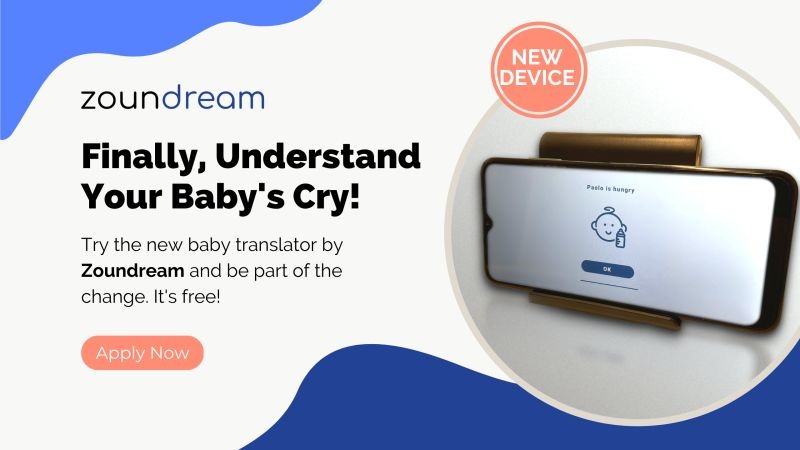
AI for Infant Care
www.youtube.com/watch?v=a5okwUbeF4M
Manage stress (www.apolloneuro.com)
Apollo Neuroscience, Inc. created a wearable device “intended to help manage stress, challenging life transitions, and to promote a healthy lifestyle.” This device is promoted as offering:
- 40% less stress and feelings of anxiety, on average
- Up to 25% more focus and concentration
- 11% increase in heart rate variability (HRV) to be resilient to stress
- Up to 30 more minutes of sleep a night
These benefits are provided by a device costing $350 and worn on the wrist. It delivers vibrations, as described by the company:
“Delivers gentle, soothing vibrations, called Apollo Vibes™, that are like music your body can feel – higher vibrations improve your energy and focus, while lower vibrations reduce stress, help you relax and fall asleep.”
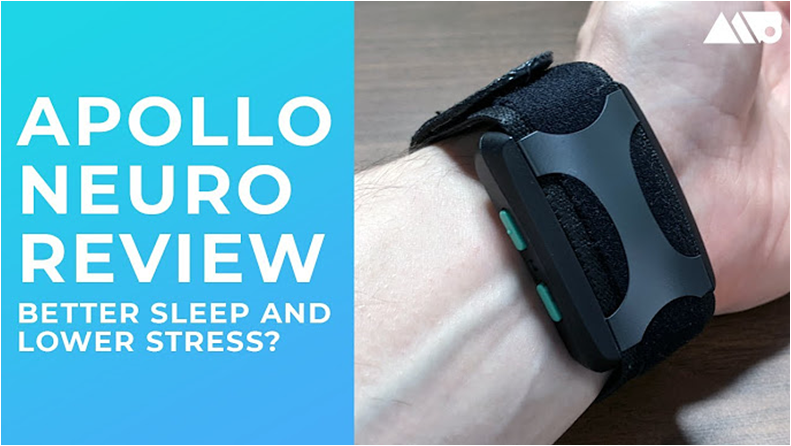
Improve Your Mood with this Device
www.youtube.com/watch?v=myoHeF8lrtE&t
Audio for pets (www.soundoasis.com)
Sound Oasis is the trade name of the Pet Sound Therapy System® with Bluetooth® BST-80-20P developed by Headwaters, Inc. based in Massachusetts. It offers sound therapy for pets to help them “relax and sleep better by creating a comforting sound environment made just for them.” It is touted as “Perfect for helping pets deal with separation anxiety, new homes, thunderstorms or neighborhood noise.” The cost is $50.
The audio consists of 20 built-in sounds composed by a doctor. Additional audio with new sounds and music can be provided with a replaceable SD card and Bluetooth link.
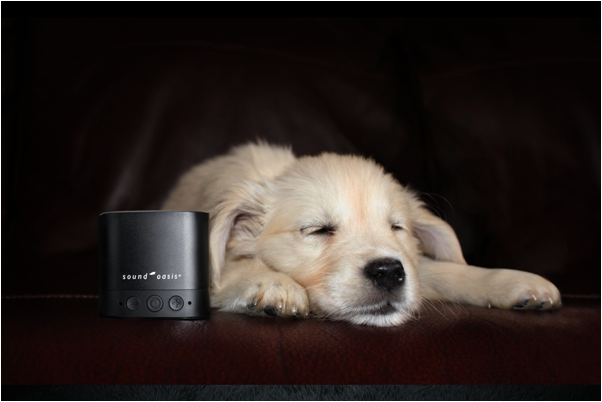
Better Pet Heath with Sound
www.youtube.com/watch?v=b6mEXGW9-QQ
A TV wall (www.ventanadesign.com)
Ventana developed modular thin digital tiles 2 feet by 2 feet consisting of microLEDs that can be assembled into a television. The images across multiple tiles blend to form one large display. It is also possible to view multiple sources on one large screen.
The tiles are joined by magnetic connectors. The TV supports resolutions up to 8,192 x 4,320 pixels (8K TV) with 78 bits per pixel, providing a large range of colors. The display offers an ultra-wide viewing angle of up to 140 degrees.
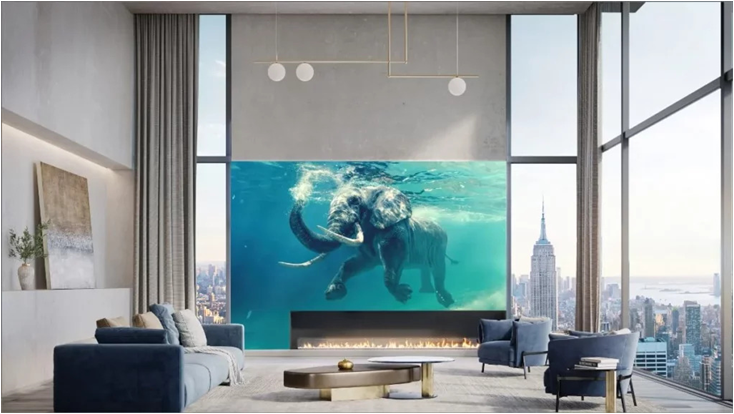
Modular Wall-Size TV
www.youtube.com/watch?v=ZQpQEb6_oyk
Captioned glasses (www.xander.tech)
Spark23 Corporation is the owner of the Xander™ brand of eyeglasses. These glasses display caption text of a talking person by translating speech to text and displaying the text for a listener wearing these glasses. Like captioned TV, the text overlays the image of the person talking. The company was founded by an MIT Media Lab student and a Harvard Business School graduate.
The product uses a form of augmented reality (AR) to combine the text with the visual field. Speech-to-text translation is done locally without cloud services to protect privacy. This product won a CTA Foundation award for products that enhance the lives of people with disabilities or older adults. The CTA Foundation is a non-profit organization affiliated with CTA. The mission of this foundation is “to link seniors and people with disabilities with technologies that enhance their lives.”
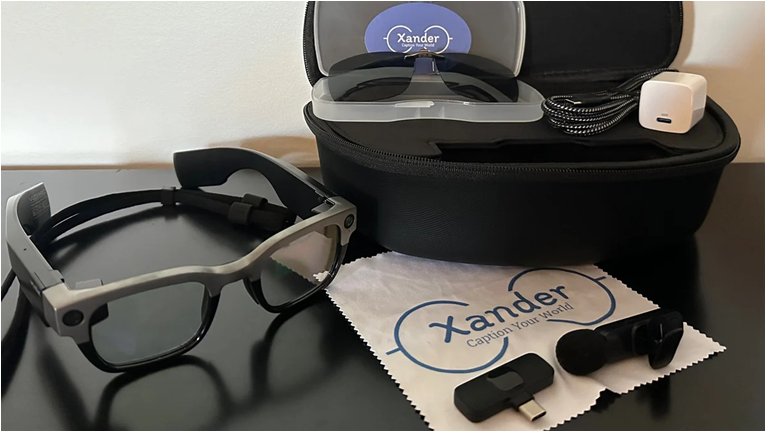
Real-time Private Closed Captioning
www.youtube.com/watch?v=mGtc9qs9qTI
Private conversation in public (www.skyted.io)
Like the intent of the Cone of Silence from the Get Smart TV series, the Skyted facemask allows confidential conversations with a degree of comfort. This product features:
- A 10-hour battery with 1.5 hours recharge
- Dynamic volume control of voice
- Five face sizes
- Ability to pair with a smart phone via Bluetooth, analog audio, or USB-C

Prevent Eavesdropping
www.youtube.com/watch?v=PK67X4Fd2e0
Audio enhancement (www.soundfun.net)
Soundfun is a Japanese company with a mission to bring more joy and confidence into everyday life, called “Sound Driven Happiness Creation,” for people with impaired hearing. The Mirai speaker system promises clearer TV dialogue at home with sound quality for $254.
Mirai incorporates technology that claims to sharpen the quality of speech while reducing background noise by providing a volume level acceptable to those with and without hearing impairments. It uses curved diaphragms to emulate the trumpet of the original mechanical phonograph because “sound created by a phonograph is more easily heard by the elderly.” The speakers connect to a TV via an optical or auxiliary port.
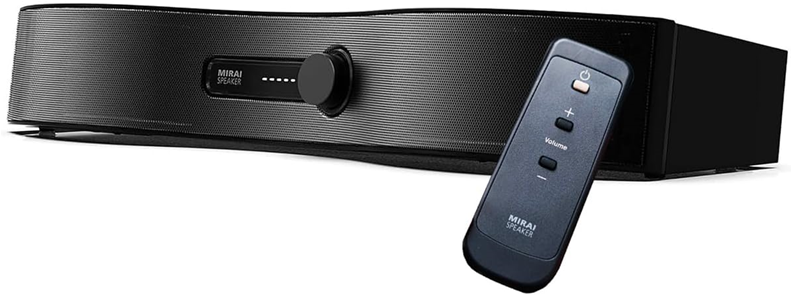
Speakers Designed for Speech Clarity
www.youtube.com/watch?v=DG2Utmiqfjk
© Copyright 2024 Kenneth P. Wacks

Dr. Ken Wacks has been a pioneer in establishing the home systems industry and a management advisor to clients worldwide. His business specialties include IoT (Internet of Things), cybersecurity, standards for home and building systems, AI-based energy management including renewables, and digital media networks. He also provides due-diligence for investors and expert witness services for litigants including patent, employment non-compete, and trade-secret cases. Please visit kenwacks.com or contact Ken at +1 781 662-6211; [email protected]; www.kenwacks.com


